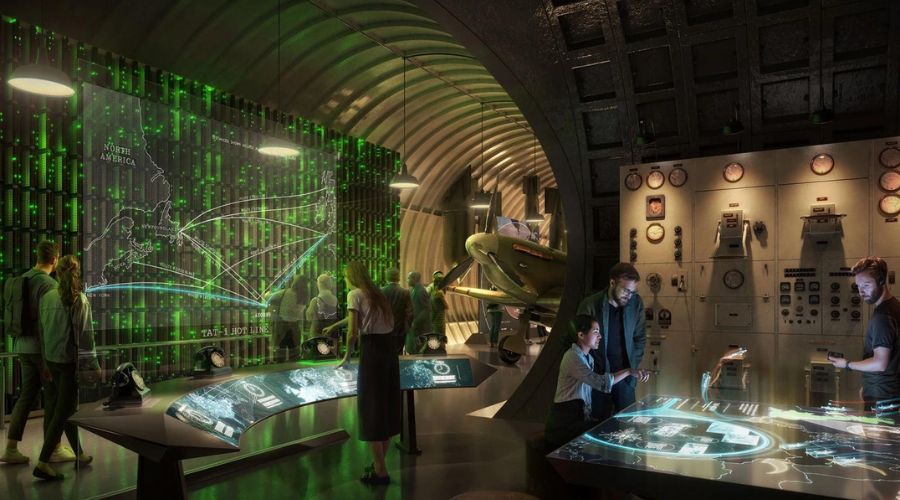A network of hitherto secret underground tunnels built to shelter Londoners during World War Two are to be restored and opened to the public for the first time under a £220 million plan.

The Kingsway Exchange tunnels, passageways spanning 8,000 sq m hundreds of feet below High Holborn, were for nearly 70 years a closely guarded secret under the government’s Official Secrets Act because they were at one time the base of operations of MI6.

When in operation the Kingsway Exchange accommodated up to 200 staff, supported by self-contained water and air conditioning systems, along with the “deepest licensed bar” in London, a restaurant with mock windows and a recreational room with snooker tables.
Under new proposals by architectural firm WilkinsonEyre, and subject to planning approval, the mile-long underground tunnels will become a museum and event space, capable of hosting two million visitors a year.
The vision is to bring to life the history of the tunnels by installing high-resolution large-scale curved immersive screens, interactive structures, scent emitting technology and hundreds of individual acoustic pinpoint speakers to recreate the real-life location that inspired Q Branch in Ian Fleming’s James Bond novels, where the author was the Admiralty’s liaison officer.
The tunnels could also be used to host “major entertainment businesses, artists, performers and curators”.

Originally built to shelter Londoners during the Blitz, the British Government dramatically enlarged the network of tunnels at the start of the Cold War to serve as a secure and secret long-distance telephone exchange – the tunnels operated the first Transatlantic telephone cable, TAT1, which notably acted later as the ‘hotline’ between Moscow and Washington during the Cuban Missile Crisis; much of this original equipment will be retained.
By the late 1980s, telecommunication technology had advanced and the tunnels’ telephone centre became obsolete and was fully decommissioned.
“WilkinsonEyre are delighted to bring our experience designing visitor destinations to this unrivalled location, in the heart of London, but unknown to most. These secret spaces present the opportunity to tell extraordinary stories that helped shape the 20th Century, alongside awe-inspiring digital immersive experiences,” said Paul Baker, WilkinsonEyre director.
Enjoyed this? Try Blackpool Airport outlines multi-year expansion plan – including its own ‘Silicon Valley’
Get industry news in 5 minutes!
A daily email that makes industry news enjoyable. It’s completely free.
